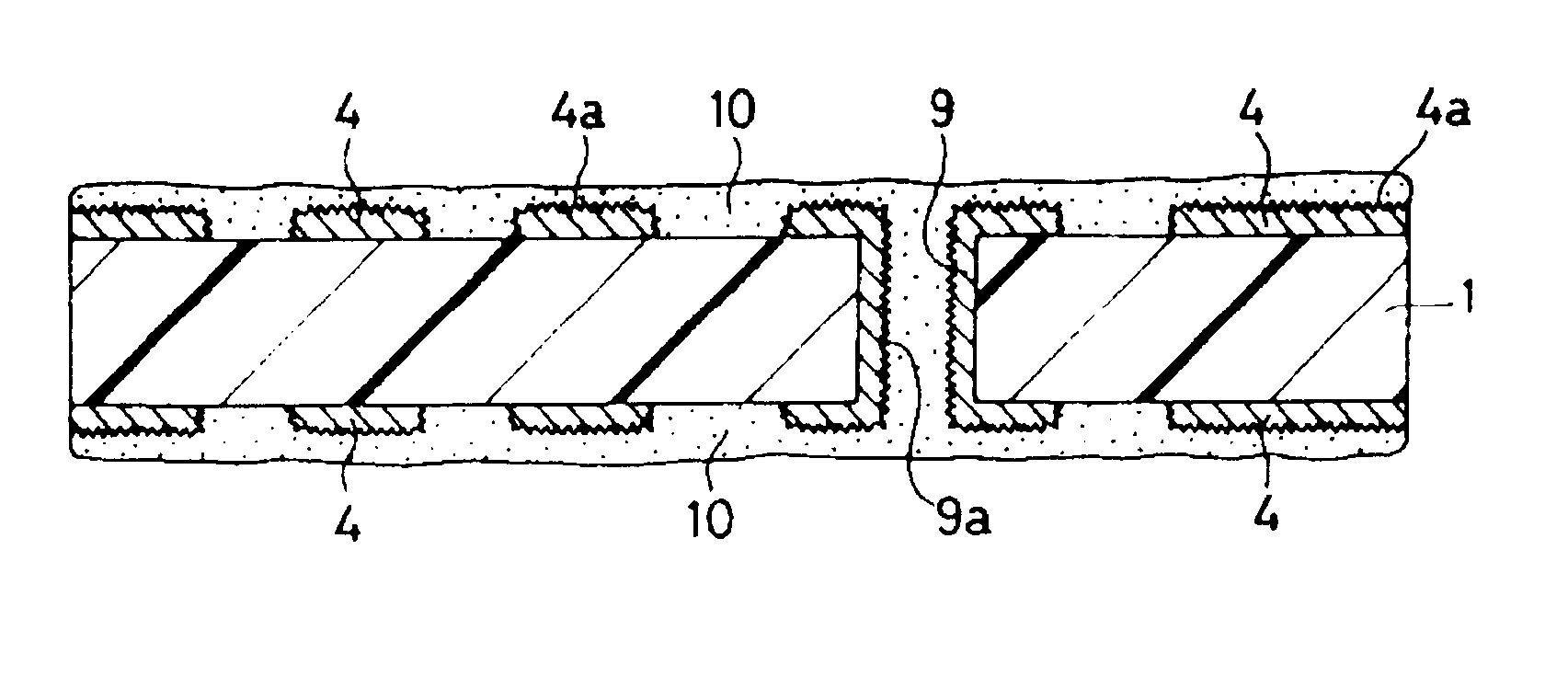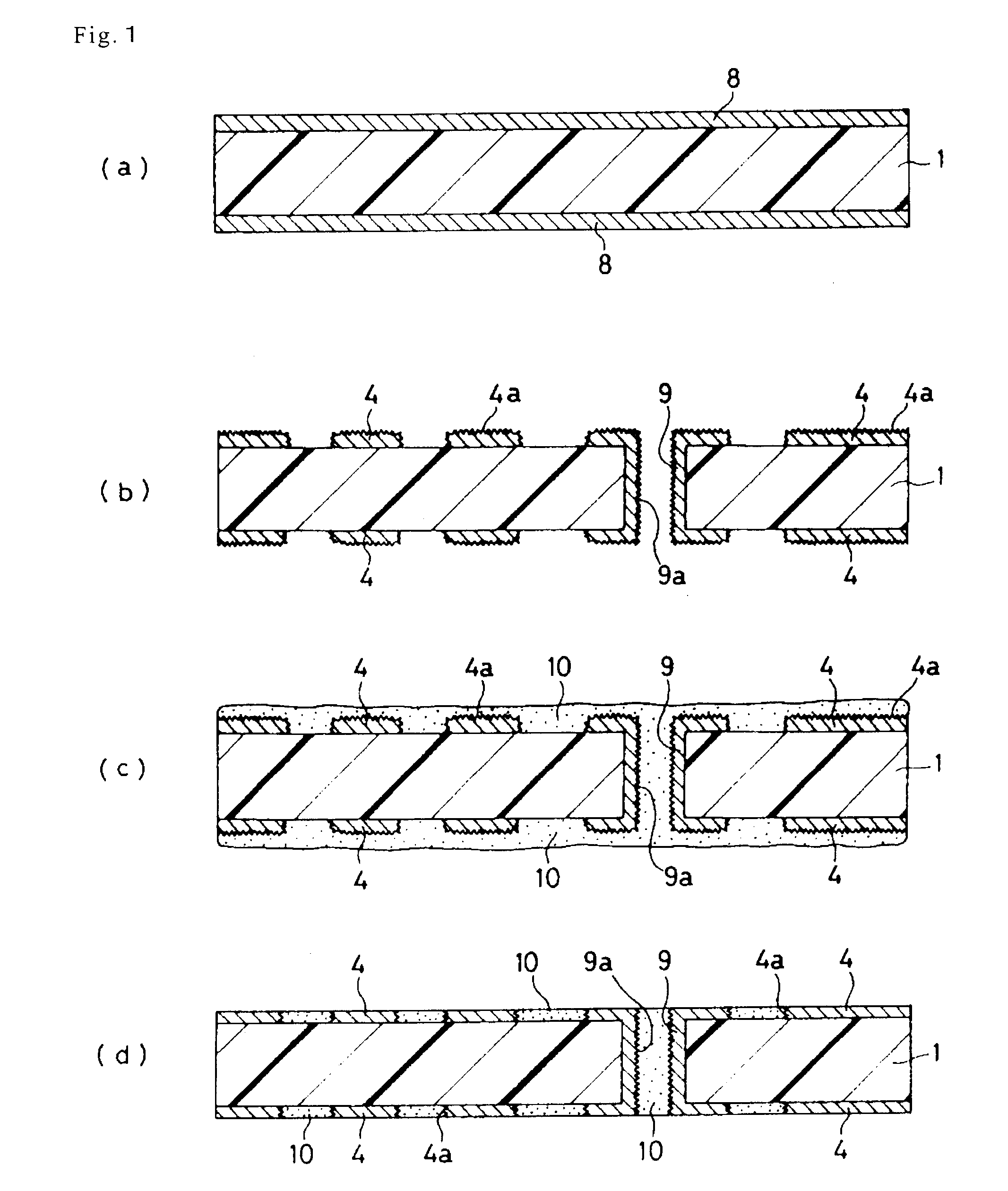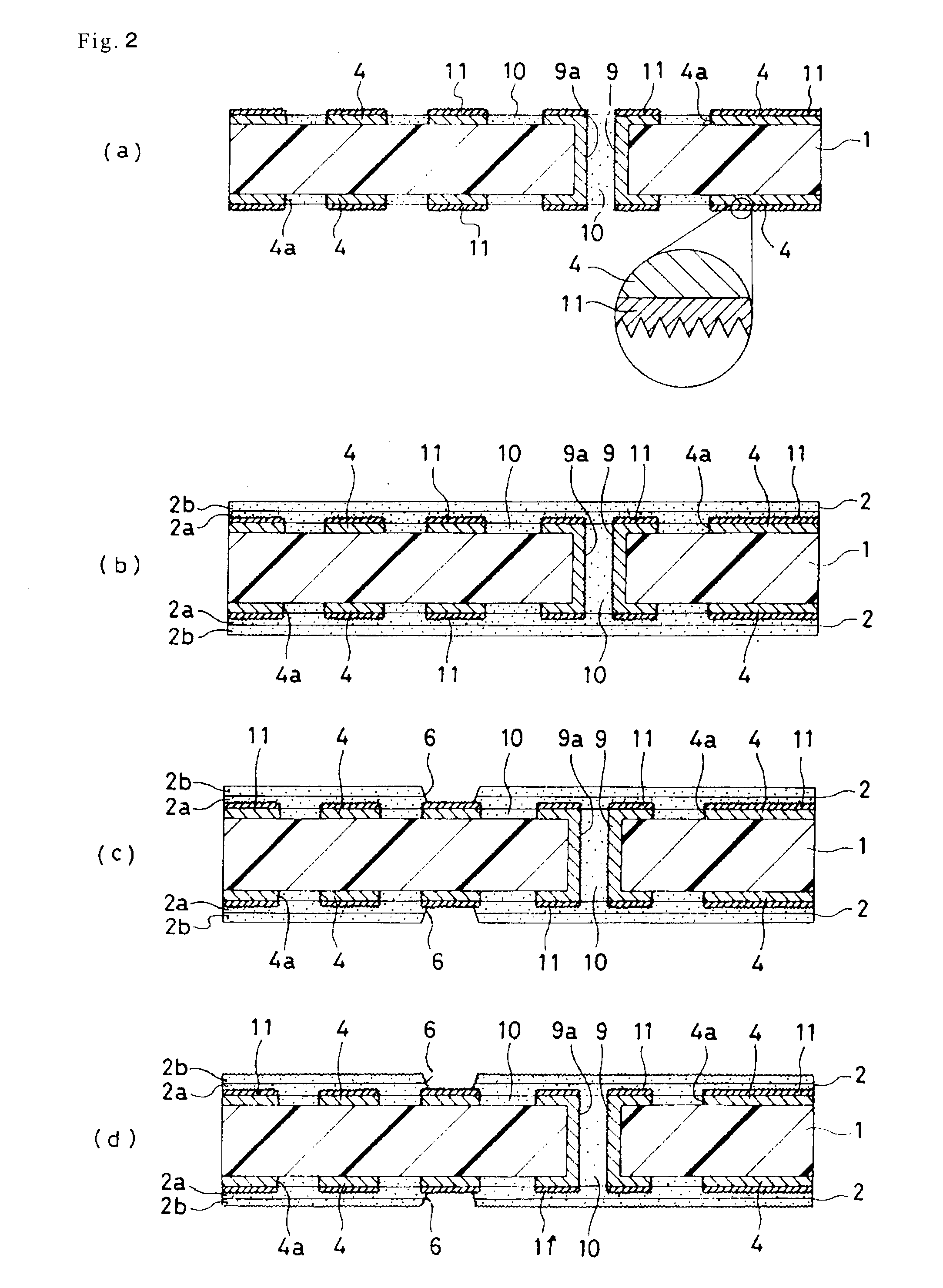Multilayered printed circuit board, solder resist composition, multilayered printed circuit board manufacturing method, and semiconductor device
a printed circuit board and multi-layer technology, applied in printed circuit manufacture, non-metallic protective coating applications, metallic pattern materials, etc., can solve the problems of cracking and peeling, affecting the performance of the printed circuit board, and generating stress on the solder resist layer
- Summary
- Abstract
- Description
- Claims
- Application Information
AI Technical Summary
Benefits of technology
Problems solved by technology
Method used
Image
Examples
example 1
A. Preparation of a Resin Composition for Roughened-Surface Formation for an Upper Layer
[0363] (i) A mixture composition was produced by blending 35 parts by weight of a resin solution produced by dissolving a cresol novolak type epoxy resin acrylated in 25% (made by Nippon Kayaku Co., Ltd.: molecular weight 2,500) of 80 wt. % concentration in diethylene glycol dimethyl ether (DMDG), 3.15 parts by weight of a photosensitive monomer (made by Toagosei Chemical Industry Co., Ltd.: Aronix M 315), 0.5 parts by weight of a defoaming agent (made by San Nopco Ltd.: S-65), and 3.6 parts by weight of N-methylpyrrolidone (NMP) in a container and mixing and stirring them.
[0364] (ii) Another mixture composition was produced by blending 12 parts by weight of polyether sulfone (PES), 7.2 parts by weight of an epoxy resin particle (made by Sanyo Chemical Industries, Ltd.: Polymerpol) with the average particle size of 1.0 μm and 3.09 parts by weight of the particle with the average particle size o...
example 2
A. Preparation of a Resin Composition for Roughened-Surface Formation for an Upper Layer and an Under Layer and Preparation of the Resin Filler were Carried Out in the Same Manner as Described in the Example 1
B. Method for Manufacturing a Multilayered Printed Circuit Board
[0402] (1) A copper-laminated laminate plate composed of a substrate 1 which is made of a 1.0 mm-thick glass epoxy resin or BT (bismaleimide triazine) resin with a 18 μm-thick copper foil 8 laminated on both sides of the substrate 1 was used as a starting material (reference to FIG. 6(a)). At first, the copper-laminated laminate plate was drilled to form a through hole, subjected to electroless plating treatment and then etching treatment in a pattern to form an under-level conductor circuit 4 in both sides of the substrate 1 and a plated-through hole 9.
[0403] (2) After the resultant substrate in which the plated-through hole 9 and the under-level conductor circuits 4 are formed was washed with water and dried, ...
example 3
[0429] A multilayered printed circuit board was manufactured in the same manner as the example 1 except that 7 parts by weight of epoxy-terminated polybutadiene was further added as an elastomer in the process of preparing the solder resist composition in the step (16).
PUM
 Login to View More
Login to View More Abstract
Description
Claims
Application Information
 Login to View More
Login to View More - R&D
- Intellectual Property
- Life Sciences
- Materials
- Tech Scout
- Unparalleled Data Quality
- Higher Quality Content
- 60% Fewer Hallucinations
Browse by: Latest US Patents, China's latest patents, Technical Efficacy Thesaurus, Application Domain, Technology Topic, Popular Technical Reports.
© 2025 PatSnap. All rights reserved.Legal|Privacy policy|Modern Slavery Act Transparency Statement|Sitemap|About US| Contact US: help@patsnap.com



